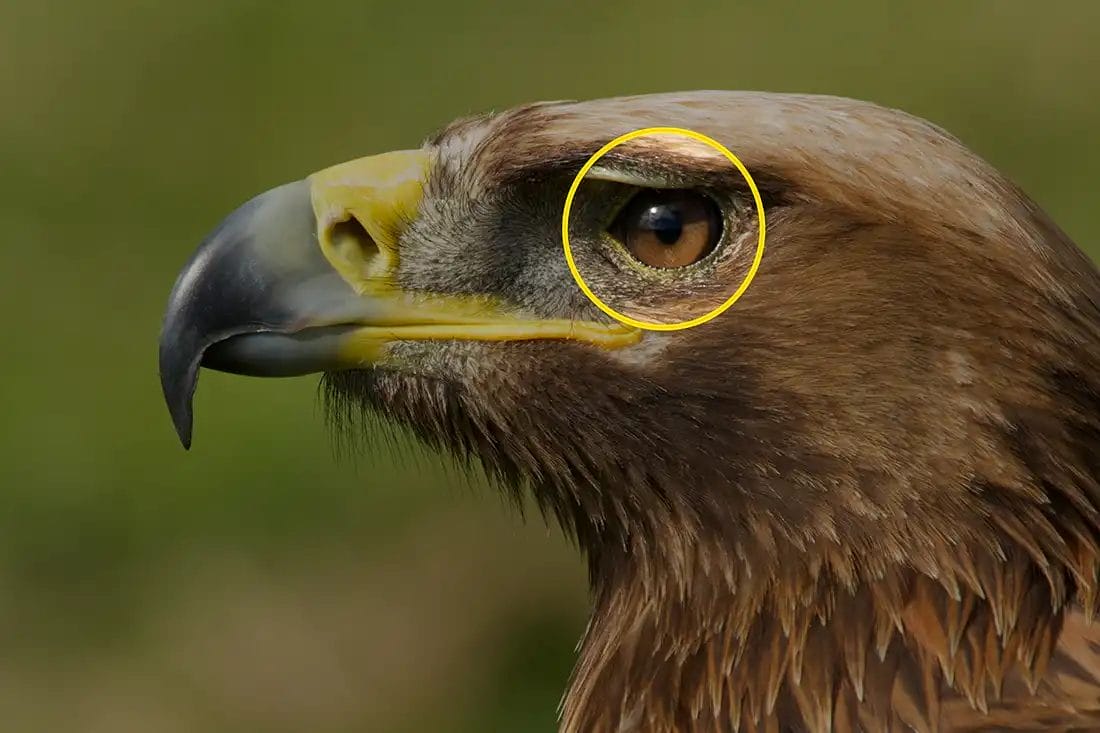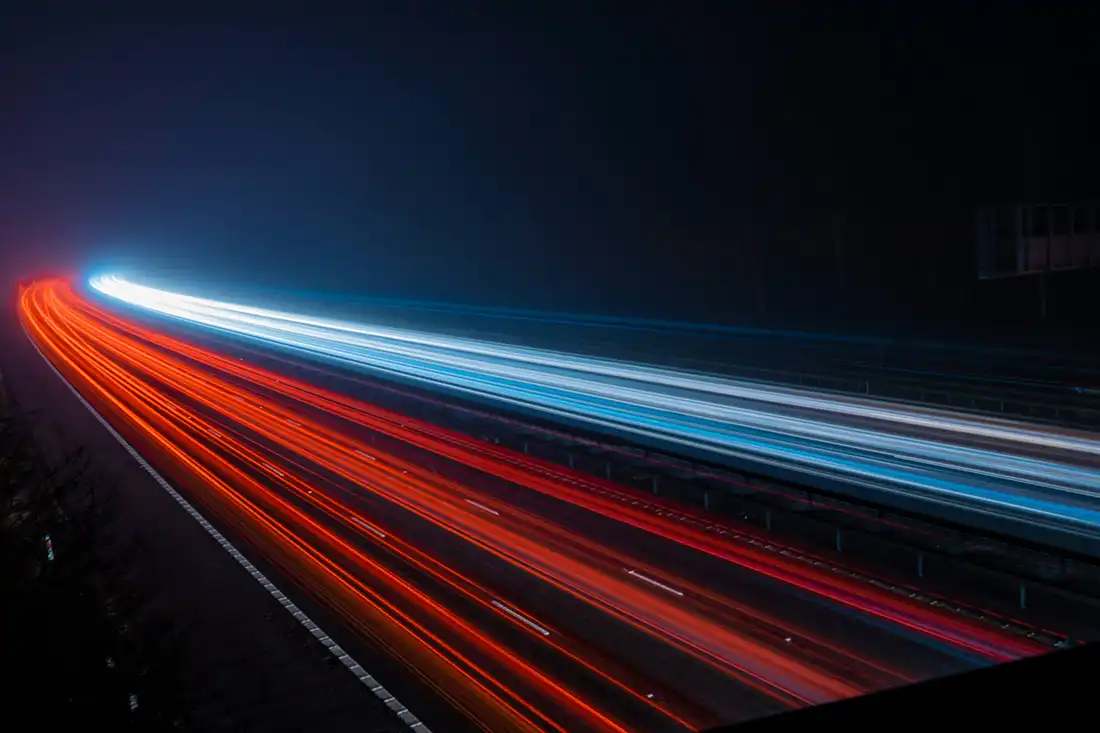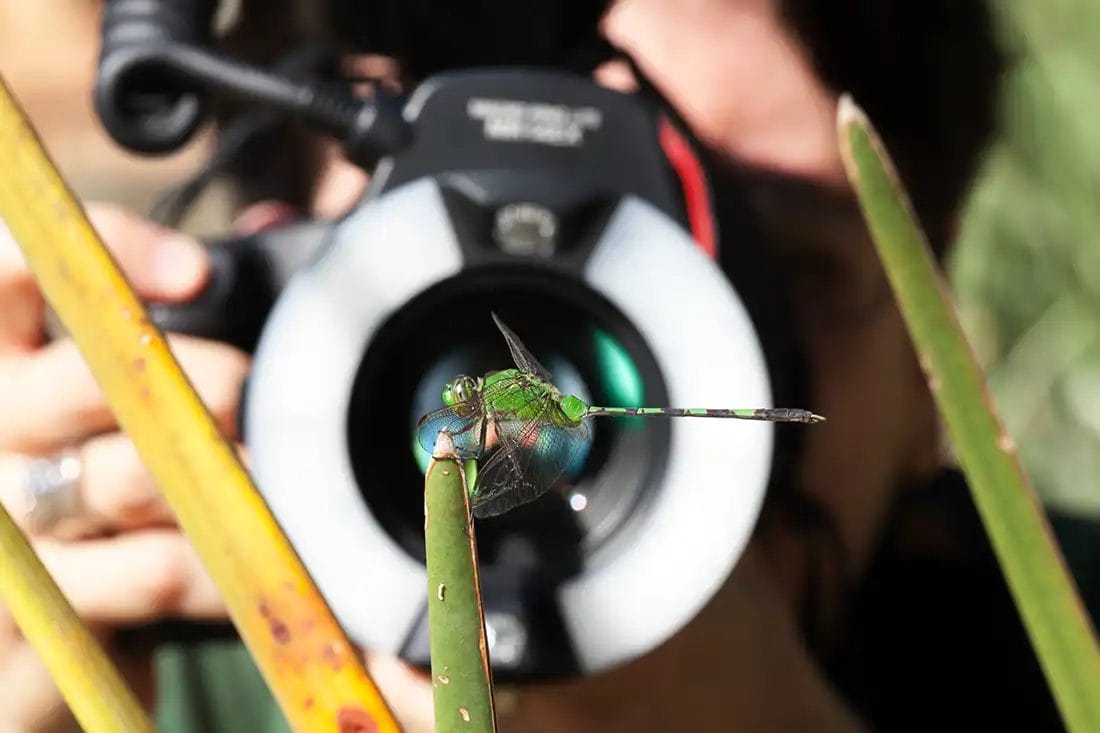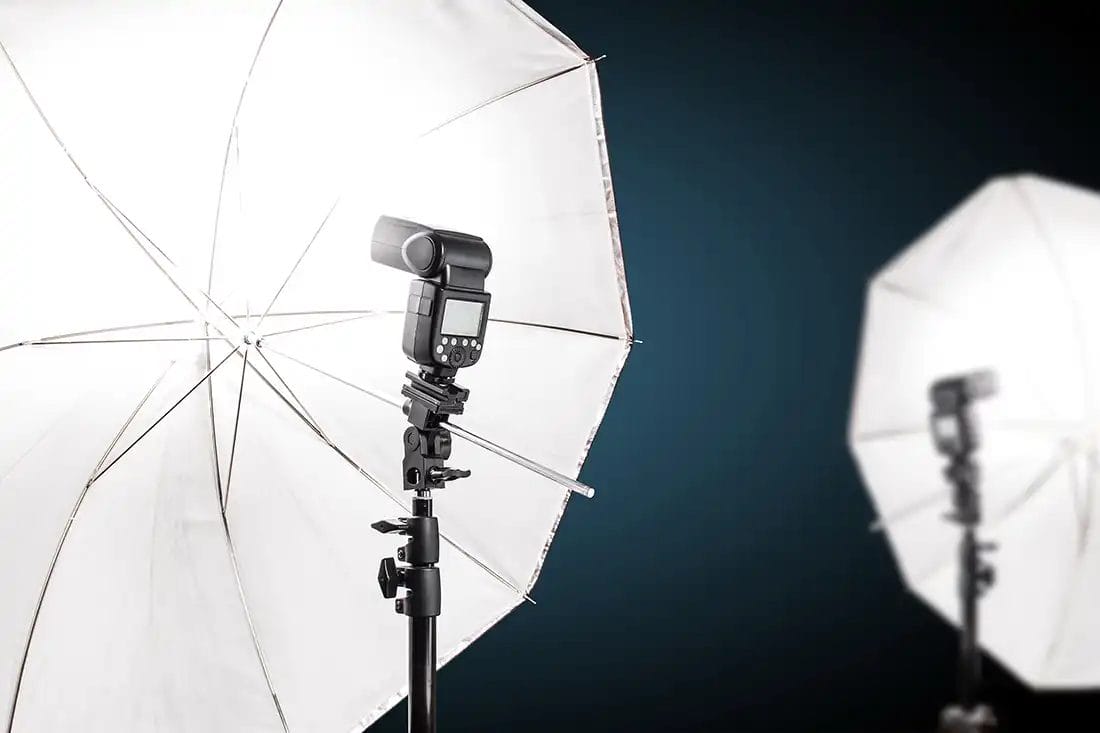
The more and more time you spend as a photographer the more terms and phrases you’ll hear mentioned and sometimes you might feel it’s a little too late to ask the meaning.
Don’t worry, we’ll help you out with this massive list of photography lighting terms, tools and techniques so you’ll feel more in the know and confident going forward.
Get a full beginner’s guide to lighting for photographers here.
Light that is present in a scene. This could be sunshine or an artificial light source such as a bulb. Flash lighting is not ambient, as it refers to pre-existing lighting not added by the photographer.
Artificial lighting is a source of light that is anything apart from the sun – an natural source of light. This could include a household bulb or a flash.
A style of lighting that only illuminates the closest side of a face in a portrait. The word broad refers to the largest portion of the face that is visible to the camera. The opposite side to broad is narrow lighting.
When a light is placed behind a subject to only illuminates the outline creating a silhouette. Little detail is visible on the near side of the subject with backlighting.
A light placed above the camera and angled towards the subject. The lighting creates a slight shadow underneath the nose of the subject in the loose shape of a butterfly. It is a very flattering form of light championed by the Hollywood actress Marlene Dietrich which is why you may also hear it called ‘Dietrich Lighting’.

A light that doesn’t flash, it continuously illuminates the subject until it is turned off or blocked out. A common household bulb or the sun is an example of continuous light.
All lights emit at different temperatures which affects the colour of that light. This temperature scale is referred to as the Kelvin scale (K). Household bulbs and candles emit around 2500K producing warm, orange lighting.
Bright blue skies are much cooler and emit bluer tones around 9000K. Daylight balanced lighting is approximately 5500K which casts neither warm or cool tones, it appears closer to a white light.
A small reflection of a light source seen in the eye of a subject in a portrait. Catchlights are important to give shape, increase colour and make your subject look more energised.
The use of two matching light sources; one placed above the camera, the other below, both angled towards a subject. This ‘clamshell’ shape beautifies the face of the subject and the camera fits in between the gap of the lights.
Colour temperature orange (CTO) and colour temperature blue (CTB) are lighting gels that are used to counteract the colour temperature of certain lights. For lights that shine with warm colours a CTB gel is placed over the top to return it to a natural white tone.
A common lighting modifier that fits over a strobe head in a photography studio. Normally silver-coated on the inside to bounce the light towards a subject. They can be deep or shallow depending upon the effect you require.
Light that passes through a material to soften the strength and spread the light wider. Clouds are an example for diffusing sunshine.
The resulting shadow appears on the floor or a surface from using a hard light source.


A flash can either be built in/pop up in many digital cameras but is also available as a separate unit to use remotely. It is an electronically operated flash with adjustable power settings.
A light that is used to ‘fill in’ areas of shadow that is created by the main/key light. A reflector is sometimes used as ‘fill light’.
Large black boards that stop the spread/spill of light back on to a subject. It is an accessory used to introduce negative fill.
A shaped disc or sheet that is placed in front of a light to cast a patterned light/shadow. Used primarily in theatres for creating the effect of light passing through Venetian blinds for example.
The power of a digital flash unit dictates how far the light can reach. The higher the guide number (GN) the further the light can reach. All flashes have a manufacturer GN but this can be increased with higher ISO settings.
A type of modifier that attaches to the front of a softbox to help focus the diffused light onto a subject.
Light sources that demonstrate a short transition from light to shadow are referred to as ‘hard’. The sun in a cloudless sky will produce heavy shadows like this.
A lighting style that focuses on large amount of light with very few shadows. This is the opposite to low key lighting.

A study that demonstrates the connection between the brightness and distance of a light source. Intensity or brightness will decrease at an inverse proportion to the square of a distance. Simply put, light drops off evenly over a given distance.
The primary light source that is being used in your photograph. This could be the sun, a flash or another light source. It is the one that is doing the most work to illuminate the subject.
A portrait lighting style is represented by a narrow gap of light along the cheek of a subject.
When a moving light passes through a shot using a slow shutter speed a trail of this motion can be left visible. Think of cars driving along a road a night and the red/white streaks of its tail/head lights streak across the shot.
A piece of semi-transparent plastic that colours the light source. The are available in a variety of colours and intensities.
Photos are largely dark/shadow with very few highlights. Only one narrow light is used to illuminated so it doesn’t spill onto the background. Think of film noir movies and dark movie posters.
This is the exposure ratio between shadow and highlight. Having a high lighting ratio means you’ll see a lot of contrast in your shot; while a low one means little/no contrast.


The area between shadow and highlight. A large penumbra means smooth gradient, a small one means hard light and no gradient.
There are 6 qualities of light to pay attention to as a photographer; Angle, Direction, Quantity, Distance, Colour and Size. Controlling these factors as a photographer will determine the look of your overall image.
Named after the famous painter, a style of portrait lighting that is epitomised by an inverted triangle of light on the narrow side cheek of a subject.
A surface that reflects/control the direction of a light source. Photography reflectors come in white (for neutral tone reflection), silver and gold.
A modified flash unit that attached to either the camera’s hot shoe or infront of your lens. Ring flash is use in macro photography to get light a subject without shadow or in a portrait leaving a donut shaped reflection in the eye.


When light is only illuminating half of the subject there is a clear ‘split’ between light and shadow with a proportional balance. Split lighting can be achieved by positioning a light at the side of a subject.
Light that passes through a diffusing material to soften and spread the emitting light. Light from the sun that has passed through the clouds on an overcast day is soft light.
A narrow conical-shaped lighting modifier that creates a narrow spotlight effect. Think of the iconic James Bond gun barrel point-of-view shot, this is similar to the effect of a snoot.
A lighting modifier that softens the light from a flash or other continuous sources. It encompasses the light so there is no spill and all the available light is used.
The angle at which light spreads over an area. The angle can be narrowed by using modifiers such as barn doors to direct the path of the light.
There are 3 qualities of light that you will encounter – hard, soft and reflected.
A classic example of a lighting modifier that can either be used to bounce light back into a scene or to be shot-through facing the subject.

While these are the most common terms and techniques, you’ll no doubt encounter many more niche terms. Hopefully this glossary of photography tools, terms and techniques has filled in any blanks your knowledge bank!
Bookmark and save this article so you can find it again in the future to refresh your memory.
If you’ve got any other questions about photography chances are you’ll find the answers in some of our other articles and tutorials below.
Discover TOP features in the Lightroom CC mobile app with this guide for enhancing your photo editing skills. For desktop and tablet too.
Shooting sunsets using amazing 5-in-1 magnetic lens filters from Kentfaith, the 1st choice for photo & video products.
Popular memory cards for photography – what’s the best SD card for your digital camera? Choose the right capacity and class speed in our guide
Learn the basics of photography – fast – with our FREE 60-Second Photographer online course. Each class is short and sharp with simple, actionable steps that give you immediate results.
x 30 lessons

© iPhotography™
Become a confident and competent photographer in less than 30 minutes!
Before you leave, make sure you’ve secured your FREE online photography course (worth £29.99)
Each class is just 60-seconds or less making it the fastest and easiest way to learn photography!